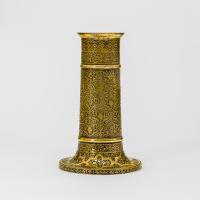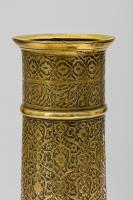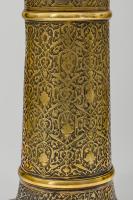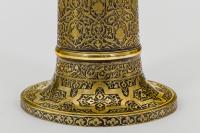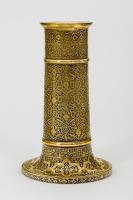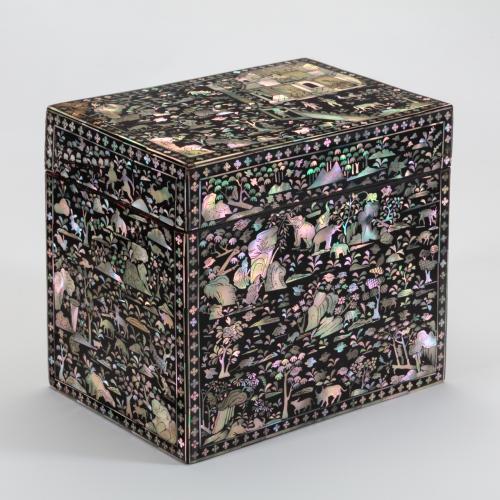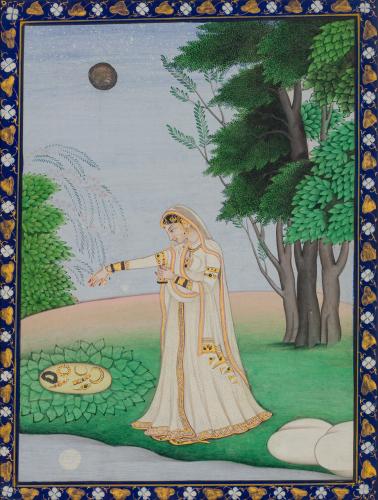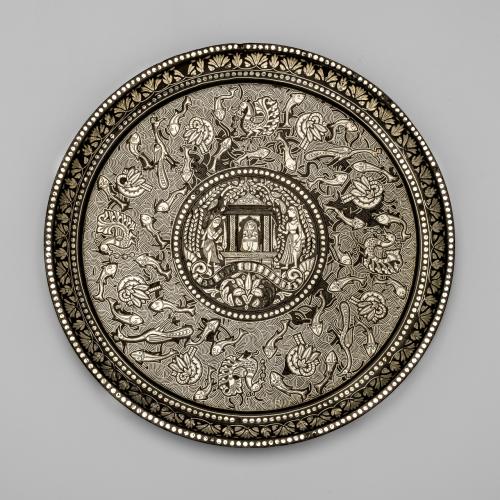
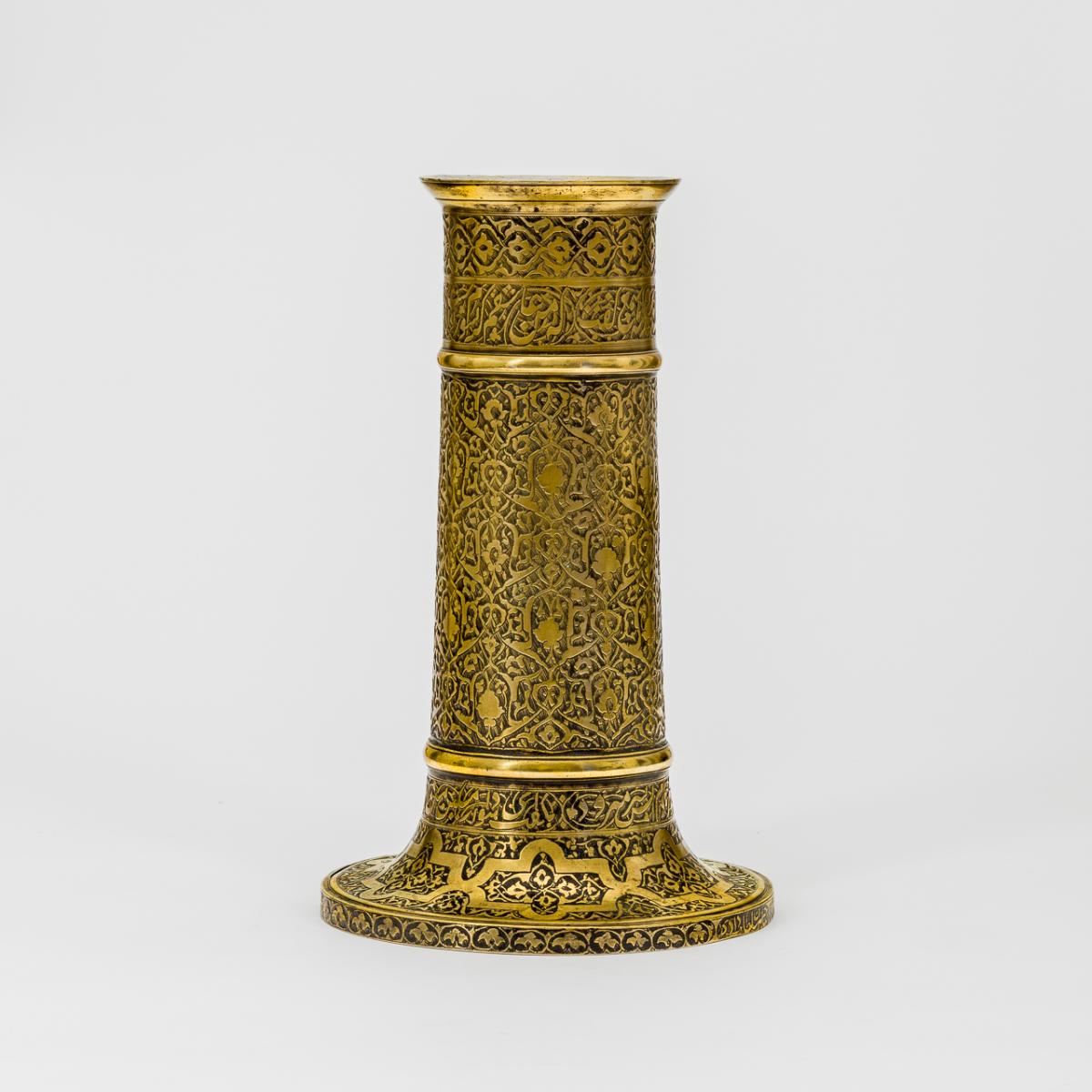
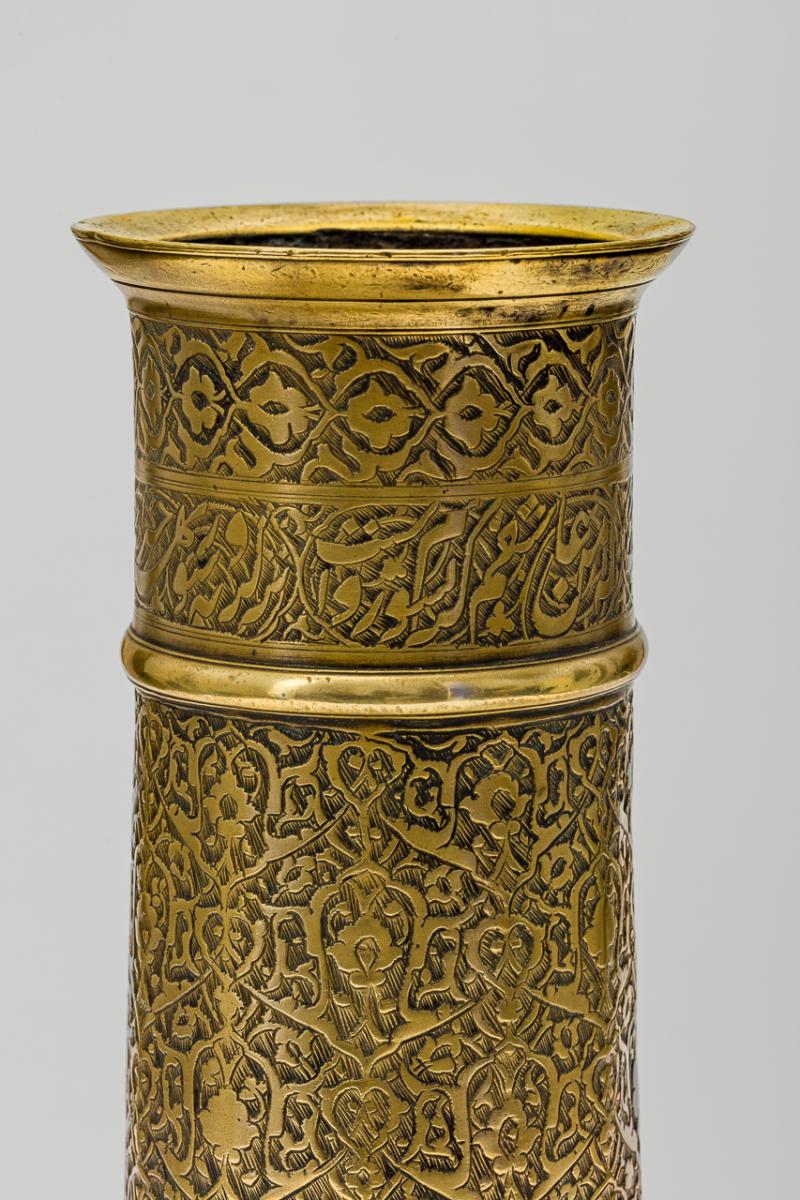
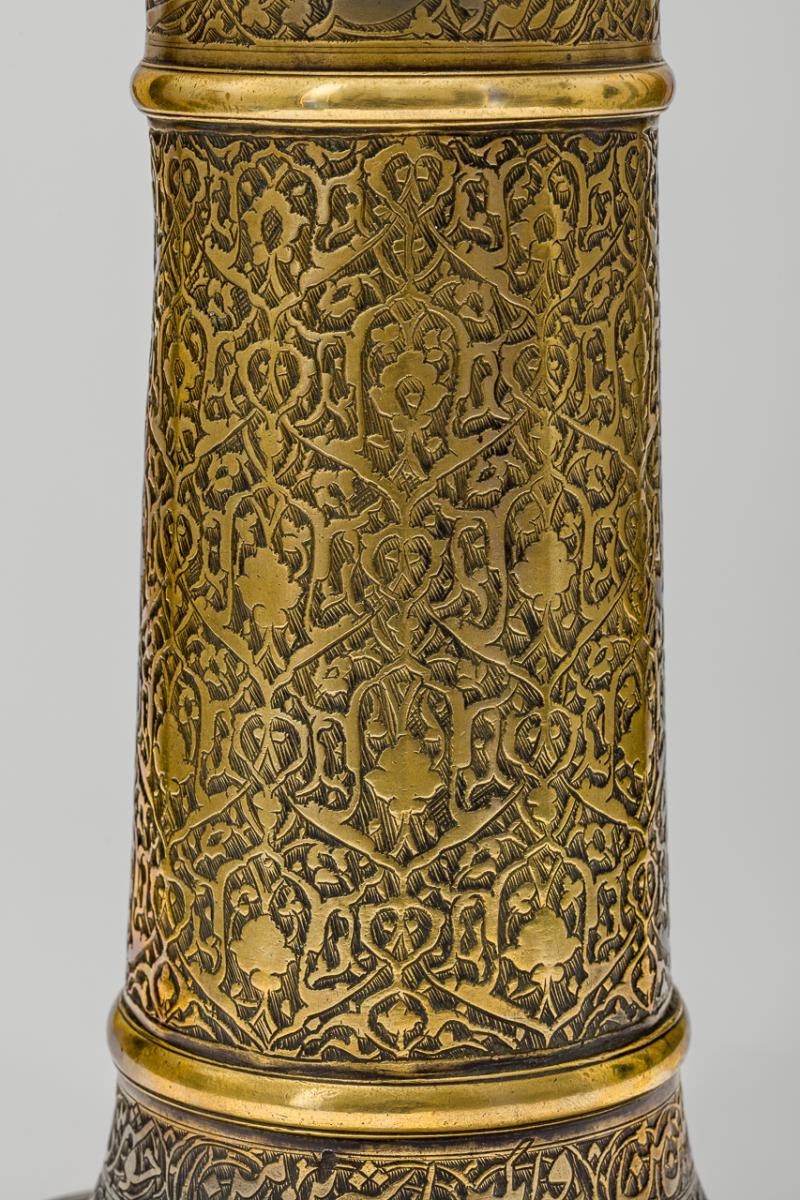
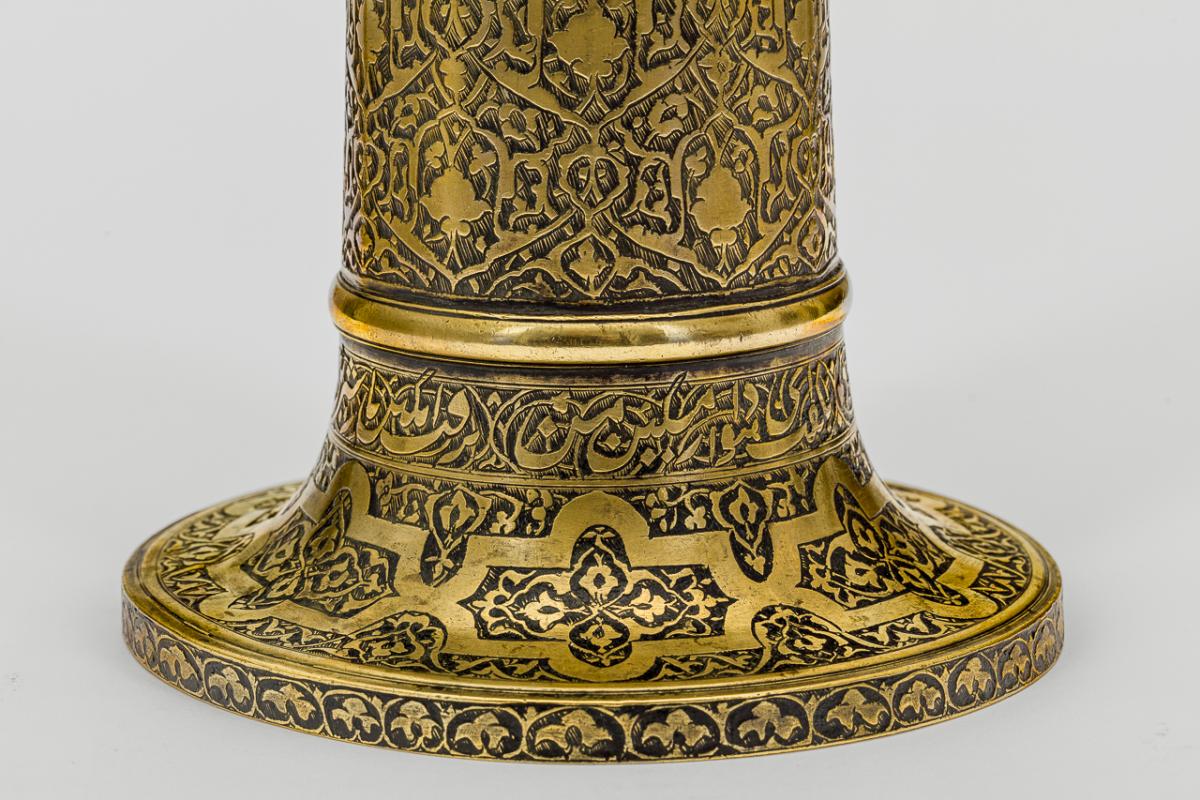
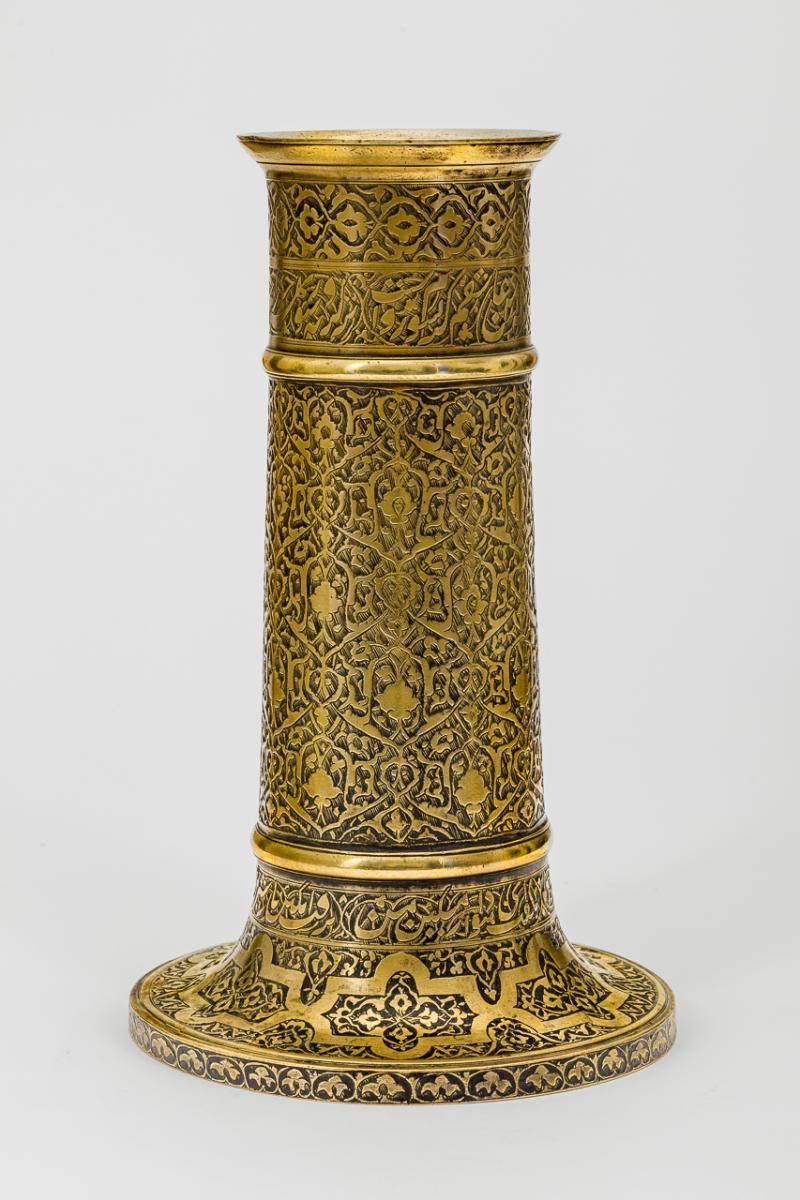
Price on application
This object is eligible for a Certificate of BADA Provenance
The BADA Standard
- Since 1918, BADA has been the leading association for the antiques and fine art trade
- Members are elected for their knowledge, integrity and quality of stock
- Our clients are protected by BADA’s code of conduct
- Our dealers’ membership is reviewed and renewed annually
- Bada.org is a non-profit site: clients deal directly with members and they pay no hidden fees
Safavid Torchstand.
Iran, Late 16th to early 17th century.
Brass, engraved and inlaid with black substance.
29.5cm high, diameter at base 18.5cm, diameter at rim 10.5cm.
This columnar torchstand (Persian: mash’al, lit. ‘pillar-candlestick’) is typical of western Persian metalwork made during the reign of ʿAbbās I (1588-1629), the fifth shah of Safavid Iran.1 The distinctive form of these torchstands, with their splayed foot, lightly tapered central shaft, and three distinct sections, derives from 15th century Timurid candlesticks (see V&A 775-1892).2 Though these torch-stands were repurposed in later periods as candlesticks, and are consequently frequently mistaken as such, they were designed to be oil lamps.3 The upper flange would have been topped with a domed cover, which, when reversed, could serve as a receptacle for oil (see V&A 1526-1903 for an intact example).4
The central shaft is lightly chamfered with 12 facets. Its decorative language derives from Persian illuminated manuscripts and carpets. Palmettes are encircled by islīmī, a split leaf and vine pattern. The upper third of the torch-stand is subdivided into two, with the top band decorated by a palmette diaper pattern, and the lower band five cartouches containing verses in nasta’liq from the thirteenth-century Bustan by Saadi. The base of the torch-stand is similarly divided into two, with the top band containing the next verses from the Bustan, and the lower band containing 6 large dodecahedral medallions. A background of fine hatching, to which a black substance has been added, provides contrast to the shiny ornamentation.
As is typical for these torch stands, the owner, Sultan Dada (سلطان داده), is identified in a small cartouche on the rim of the base.
The upper band of inscription reads:
شبی یاد دارم که چشمم نخفت
شنیدم که پروانه با شمع گفت
که من عاشقم گر بسوزم رواست
تر[ا] گریه و سوز بهر چراست
'I remember one night as my eyes wouldn’t close
I heard the moth say to the candle,
‘I am stricken with love, if I burn ‘tis but right
But why do you weep, why burn yourself out?’5
This inscription is found on several torch-stands, including one in the Metropolitan Museum of Art (accession no. 29.53) and one in the Victoria & Albert Museum (accession no. 44-1870). It makes reference to a Sufi allegory in which the moth (the human soul) is drawn in by the light (God). The metaphor of divine light is reinforced by the light of the oil lamp. Evidence that such torch-stands may have been used in religious settings is found in the mid-sixteenth century Falnama Tahmasi, which contains illustrations of torch-stands in a mosque.6
The inscription in the bottom third of the torch stand is a continuation of the same Saadi poem, reading:
بگفت ای هوادار مسکین من
برفت انگبین یار شیرین من
چو شیرینی از من بدر میرود
چو فرهادم آتش بسر میرود
It (the candle) said ‘O my poor friend,
The honey (i.e. wax), my sweet friend, has departed,
When sweetness departs from me
Like Farhad, my head burns in flames.’
n.b. accession nos are clickable links.
1 Assadullah Souren Melikian-Chirvani. Islamic Metalwork from the Iranian World, 8th-18th Centuries (London: HMSO, 1982). 268.
2 Allan, J., ‘Metalwork’, in Ferrier, R. W (ed.) The Arts of Persia. New Haven: Yale University Press, 1989. 171-186; 183.
3 Lukonin, Vladimir Grigorevich and Ivanov, Anatoli. Persian Art: Lost Treasures. London: Sirocco, 2003. 176-177.
4 Canby, Sheila R. Shah ‘Abbas: The Remaking of Iran. London: British Museum Press, 2009. 84-85.
5 Translation adapted by Will Kwiatkowski from Asadullah Souren Melikian-Chirvani. Islamic Metalwork from the Iranian World, 8th/18thcenturies. London: Victoria & Albert Museum Catalogues, 1982. 309.
6 Canby, op. cit. 55.
The BADA Standard
- Since 1918, BADA has been the leading association for the antiques and fine art trade
- Members are elected for their knowledge, integrity and quality of stock
- Our clients are protected by BADA’s code of conduct
- Our dealers’ membership is reviewed and renewed annually
- Bada.org is a non-profit site: clients deal directly with members and they pay no hidden fees


